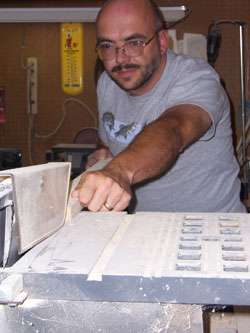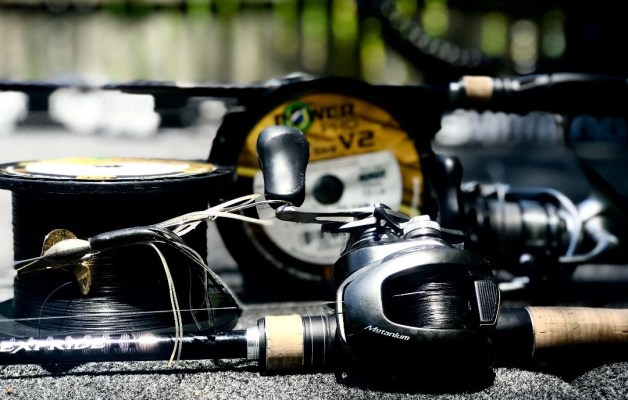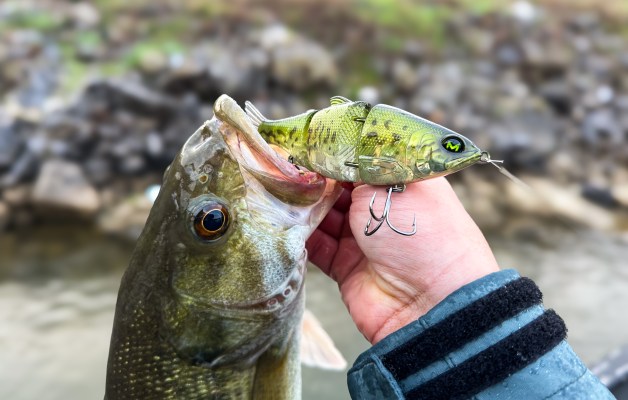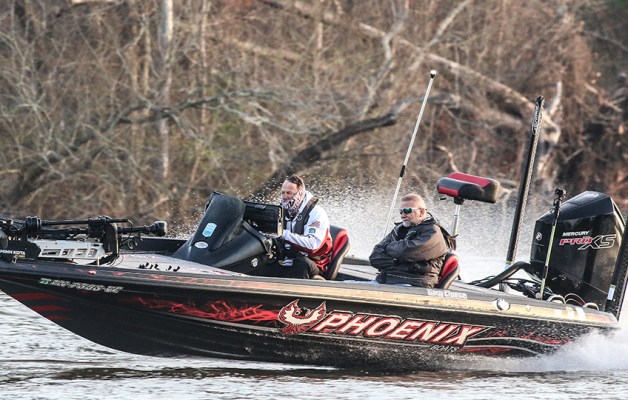
"This business isn't for everyone," says Nate Bettencourt, owner of Bettencourt Baits (www.bettencourtbaits.com). "Making high-end, custom fishing lures is slow, painstaking work. Success doesn't come overnight."
Bettencourt knows this from personal experience. He started making lures when he was just a kid growing up in California. "I messed around with spinners when I was little and then graduated to fly-tying as the years went by. Finally, after I was forced to medically retire from the Modesto Police Department after 16 years, I moved to Clinton, Mo., and got serious about gamefish baits — mostly crankbaits."
Serious may be an understatement. His baits typically take more than a year to develop — often involving 200 hours or more of hard work — before they're ready for sale to the public. That work starts with the basic physical design.
"I catch a baitfish and then use it to trace a pattern on paper before I make the prototype body. That way a bluegill looks like a bluegill, and a trout looks like a trout. I don't like one body shape with different finishes. They don't look natural. That's not what real baitfish look like."
Once he has the pattern looking like it should, he goes to work on the action. That begins with selecting the proper type of wood. Sometimes that's balsa, sometimes cedar, sometimes poplar, sometimes pine and, with some baits, it's a combination of two or three of them.
"Not all wood acts the same in the water. There's a particular type of wood that fits each lure, and to build a lure right you've got to find it," he explains.
After that he'll decide if the lure needs joints — and if so, how many and where they need to be — to swim like the real thing. Often, this involves hours of watching a particular species of baitfish in its natural habitat and then testing and retesting the prototype to get it right.
The finish comes last. He uses a photograph of the baitfish to get a true reproduction of the colors and the pattern. "With a lot of them I put the finish on with an airbrush, but sometimes it looks better if I photo imprint directly on the body. It just depends on the model and the colors involved."
He then reproduces the baits to order, one at a time, and hand-tunes each one before it's shipped.
"It's a lot of work but I don't want mediocre lures. My anglers are paying top dollar for these baits and they're entitled to a top quality product. I'm going to give them one — no exceptions, no excuses."
But love of the product isn't all there is to custom lure making. It's still a business and must be treated as such. Bettencourt is successful and has made some money at it. Nevertheless, he cautions others who are contemplating entry into the business that it isn't easy.
"It takes time to develop the skills to make a good lure. It doesn't happen overnight. I'd hate to say how many lures I've destroyed over the years learning to cut patterns, create natural movement and apply professional finishes. I've learned more from my mistakes than from my successes, but I didn't get paid for them."
Bettencourt continues to say, however, that it's easier now than it was when he was learning because of improved technology and greater access to information resources for lure makers. Web sites such as ( www.tackleunderground.com, where custom makers can exchange ideas and get competent advice, and where he serves as a moderator and frequent contributor, make a big difference.
These advances in the art, coupled with an increasing, big-bass-driven demand, will strengthen the market for custom lures, according to this craftsman. "I think the market for custom, high-end lures will continue to grow. It'll always be a cottage industry but there's a lot of bass out there waiting to be caught and a lot of anglers who want the best and are willing to pay for it."




